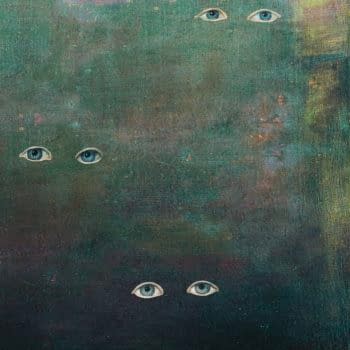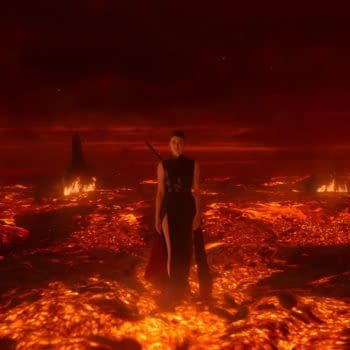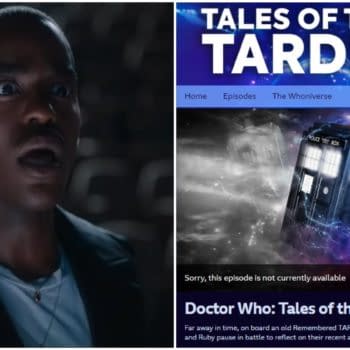Posted in: BBC, Disney+, Doctor Who, TV | Tagged: bbc, disney, doctor who, Milllie Gibson, Ncuti Gatwa, russell t davies
Doctor Who: Why "73 Yards" Has Been Embraced by LGBTQ Community
"73 Yards" may have confused some Doctor Who viewers, but it has become a favourite amongst many LGBTQ fans for its metaphors for coming out.
This week's episode of Doctor Who, "73 Yards," may have left some viewers confused, but it is already getting a huge positive reaction from one section of fandom: the LGBTQ community. Barely an hour after it was released, LGBTQ fans of Doctor Who are already posting their reactions, saying many moments in the story reminded them of their personal experiences when they were coming to terms with their identities and their fears.

In "73 Yards," the Doctor and Ruby visit a Welsh hilltop and accidentally step on a fairy circle, which may or may not have unleashed something magickal against them. The Doctor immediately disappears from Ruby's life and the world, and she finds herself alone, followed by a mysterious white-haired woman who always stays 73 yards away from her, never letting Ruby approach to talk or find out who she is. However, people in her life who approach the ghostly woman not only run away in terror but cut Ruby out of her life until she's left completely alone, doomed to live out an entire lifetime abandoned and alone, with the ghostly woman haunting her from a distance. The story becomes existential horror, but many LGBTQ viewers regard the episode as an allegory for being rejected by loved ones and society when they finally come out and embrace who they are.
The horror of Ruby's life in "73 Yards", abandoned by the Doctor, works best as a symbolic and allegorical tale. The most devastating moment occurs when Clara (Michelle Greenidge), Ruby's loving and supportive adoptive mother, flees from her after trying to help her solve the mystery of the ghostly woman. Gay and trans viewers said that rejection from their mother and UNIT, which represents society, feels akin to being rejected for their identity. Ruby not committing to relationships with men is also a stand-in for closeted people trying to conform to heteronormative conventions. The moments when Clara and Kate Stewart (Gemma Redgrave) turn cold and contemptuous of Ruby are the most chilling instances of the story, not any monster or act of violence.
She lives the rest of her life alone but is always haunted by the ghostly woman, who might symbolize her hidden, true self. When Ruby decides to use her curse or condition as a weapon to take down fascist politician Roger ap Gwilliam (Aneurin Barnard) is an LGBTQ empowerment allegory for accepting her identity. In the end, Ruby turns out to be the ghostly woman haunting her younger self. She's going back in time to warn herself not to make the wrong move, to stop the Doctor from stepping on the fairy circle and breaking it. Again, it's an allegory for looking back on a life with regret that many people, including LGBTQ people, relate to regarding decisions or paths they regret.
Doctor Who has always had LGBTQ fans. For over sixty years, fans have always identified with the Doctor's status as an outsider. They and their companions were not always presented as LGBTQ, but there were often themes and moments that viewers felt could be related to their own lives and situations. Russell T. Davies has continued that tradition with both overt and veiled or metaphorical moments that alluded to LGBTQ lives. He doesn't write them just for LGBTQ viewers but for everyone who has ever felt those moments in their lives, to tell them they're not alone.
Doctor Who is now streaming on Disney+.














